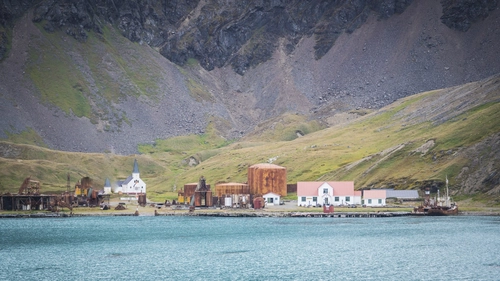Sometimes it’s easy to get caught up in the stunning coastlines, fjords, and other natural wonders of Antarctica, overlooking the man-made attractions nestled in between.
One prime example of these is Port Lockroy.
Most commonly associated with the former British base established there in 1944, Port Lockroy is a picturesque bay on Goudier Island, near the Antarctic Peninsula.
Among the many attractions in Port Lockroy, the area’s whaling remnants, post office museum, and local penguin colony are particularly cherished by Antarctic travelers.
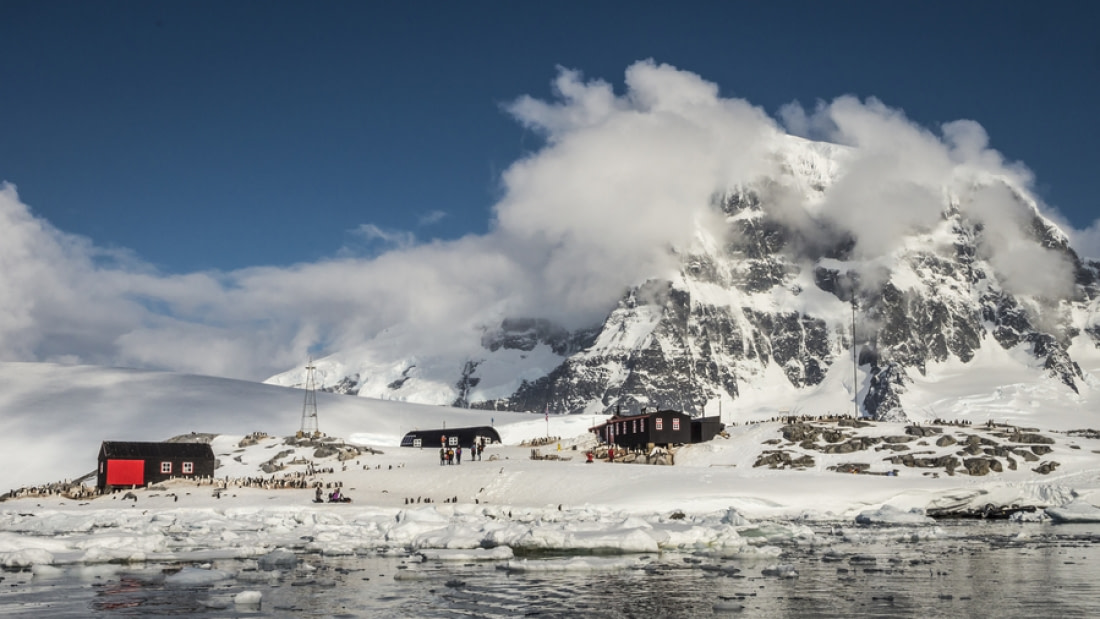
Port Lockroy whaling and war history
Port Lockroy is one of the most frequented sites in Antarctica, though its historical roots are far from tourism.
French explorer Jean-Baptiste Charcot discovered Port Lockroy during his 1903―1905 expedition, naming the area after the politician who helped finance his voyages.
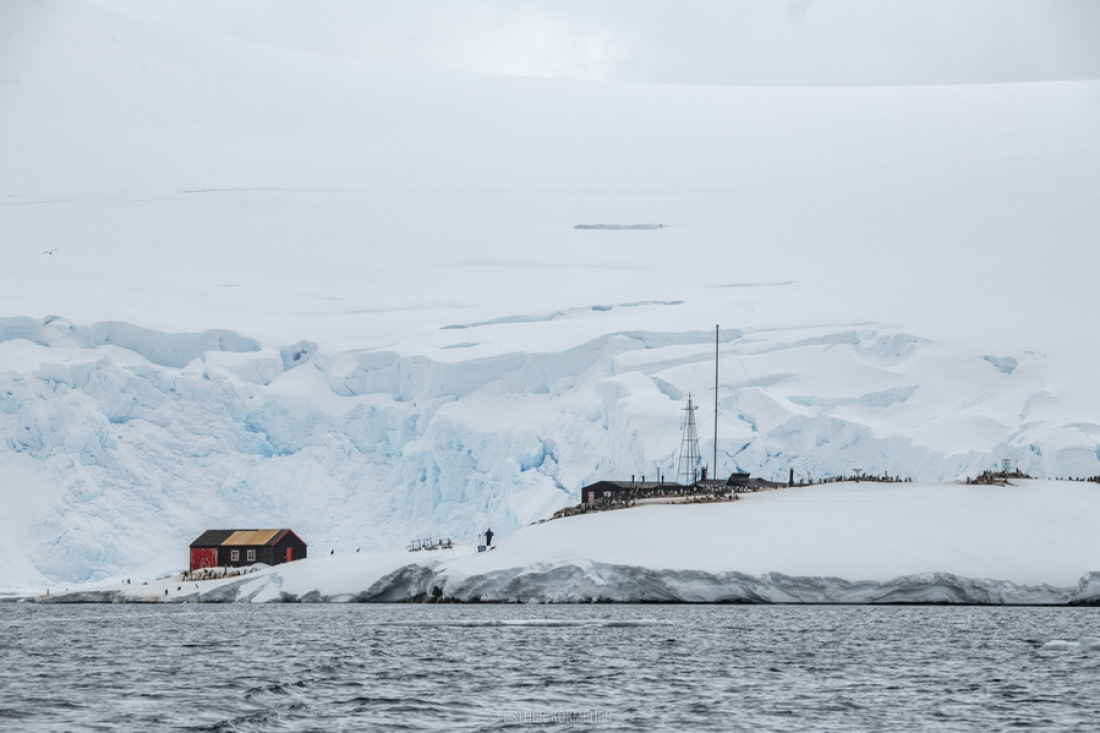
During the peak of the whaling industry, factory ships anchored in Port Lockroy while whalers ventured farther out to sea. The rusted mooring chains and long links of bleached whale bones near Port Lockroy are evidence of this history.
Between 1911 and 1931, the harbor of Port Lockroy was primarily used for whaling.
Not long afterward, during World War II, British Forces constructed several secret military bases in Antarctica to deter enemy forces. Port Lockroy’s Base A was one of these.
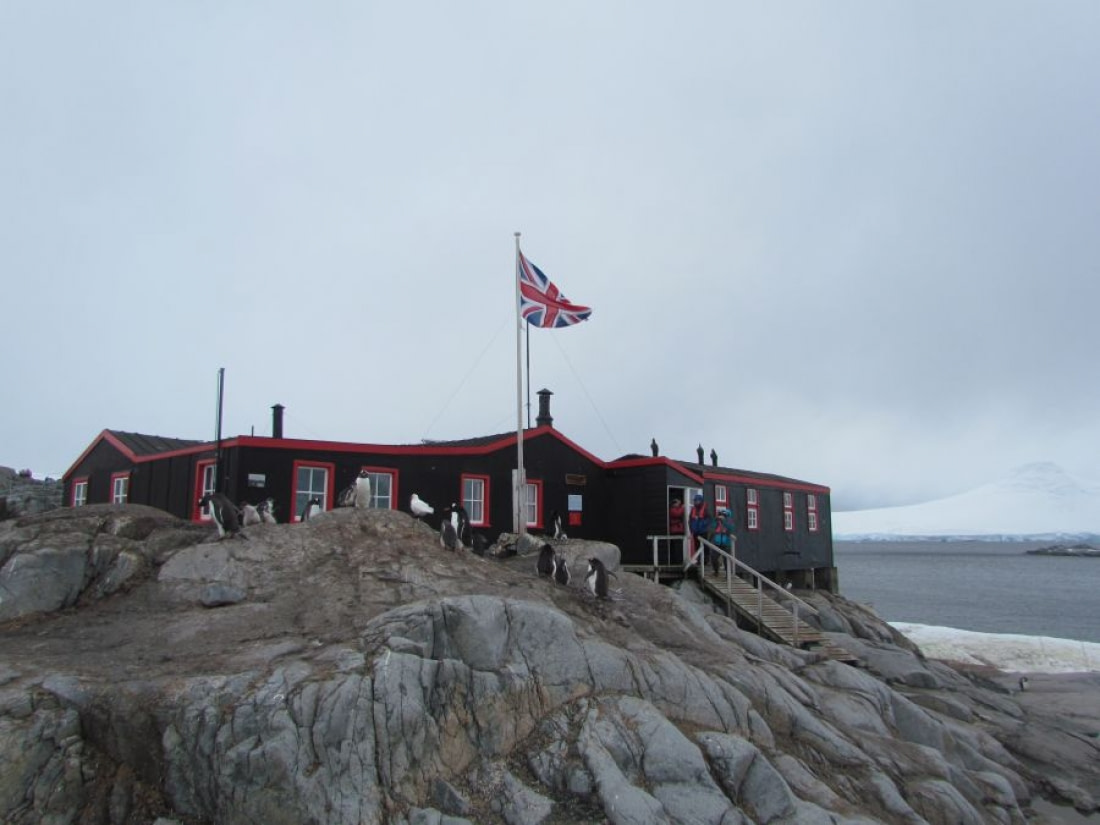
Base A became a scientific research station after the war, continuously manned until 1962.
Abandoned after that time, Port Lockroy fell into disrepair until 1996, after which it was restored to its original state.
The United Kingdom Antarctic Heritage Trust funded these renovations, working diligently to make Port Lockroy look as it did in the 50s and 60s.
Port Lockroy is a historic site and monument under the Antarctic Treaty.
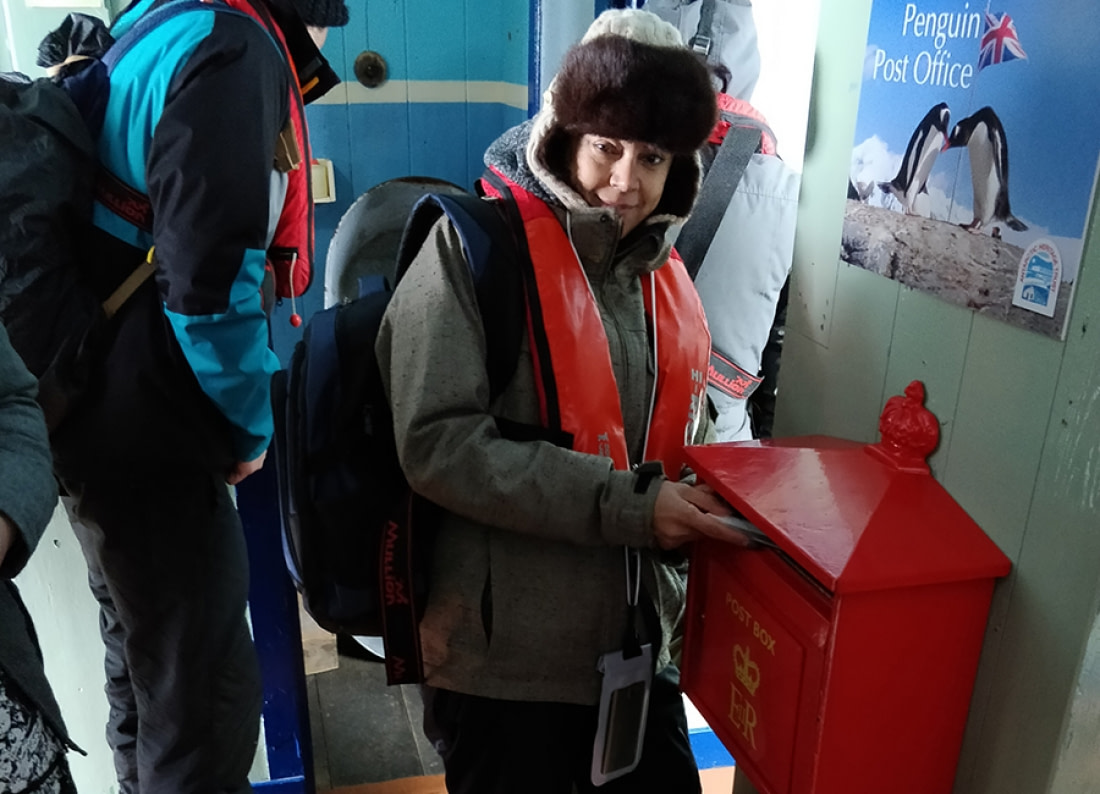
The post office museum of Port Lockroy
Port Lockroy is renowned for having the southernmost post office in the world, which in 1996 was renovated to also serve as a museum.
Among the most popular destinations for Antarctic tourists, the Port Lockroy post office is a common stop along the expedition cruise circuit.
It also features a souvenir shop that funds maintenance for Port Lockroy and other Antarctic monuments.
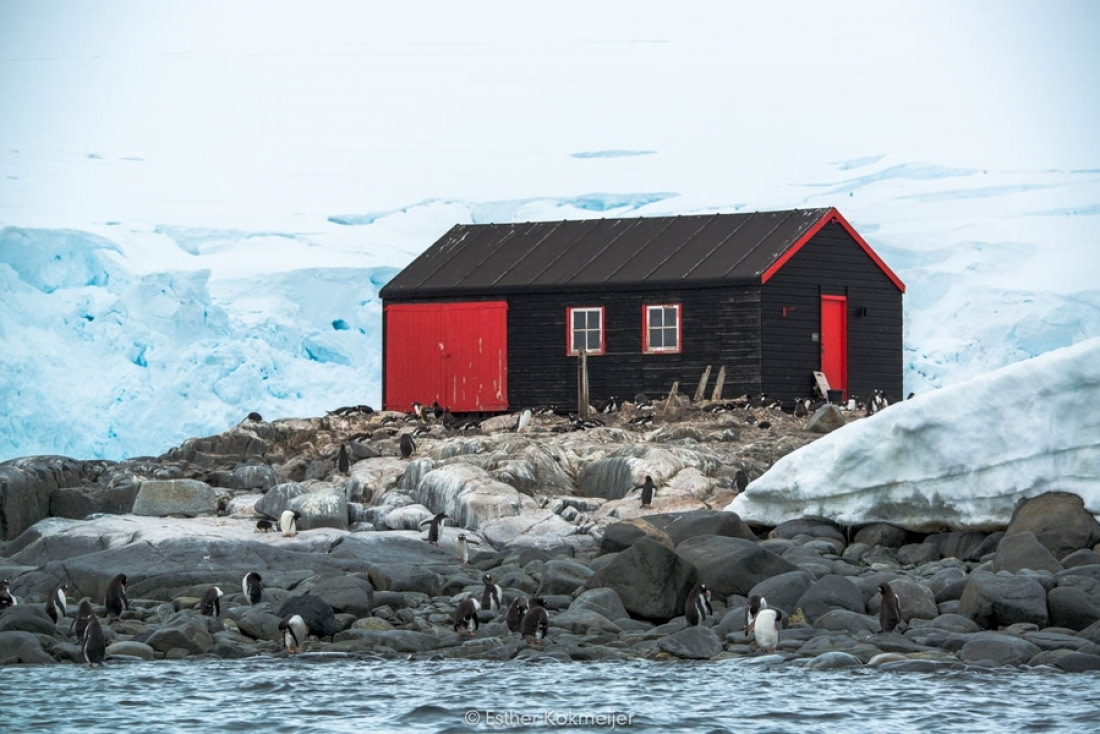
The post office staff, consisting of only four people, process around 70,000 pieces of mail sent from Port Lockroy during the roughly five months of the Antarctic tourism season.
This mail is sent by the nearly 18,000 visitors to Port Lockroy each year.
Additionally, the trust that manages the post office gathers data for the British Antarctic Survey, helping determine visitor impact on the local penguin population.
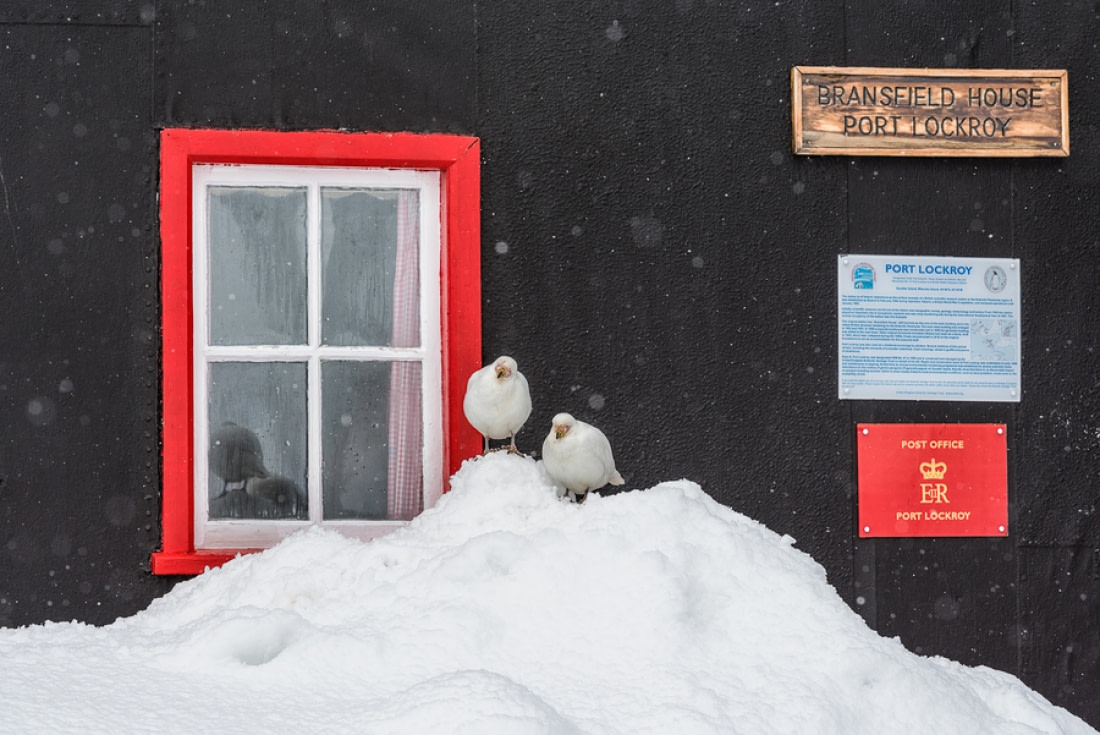
Port Lockroy’s penguin inhabitants
Speaking of penguins, Port Lockroy is teeming with them.
In fact, half the island on which Port Lockroy is located is reserved for visiting tourists, while the other half is reserved entirely for the gentoos living there.
More than 1,500 gentoo penguins inhabit the area around Port Lockroy, breeding and feeding and providing the local workers with a delightful distraction.
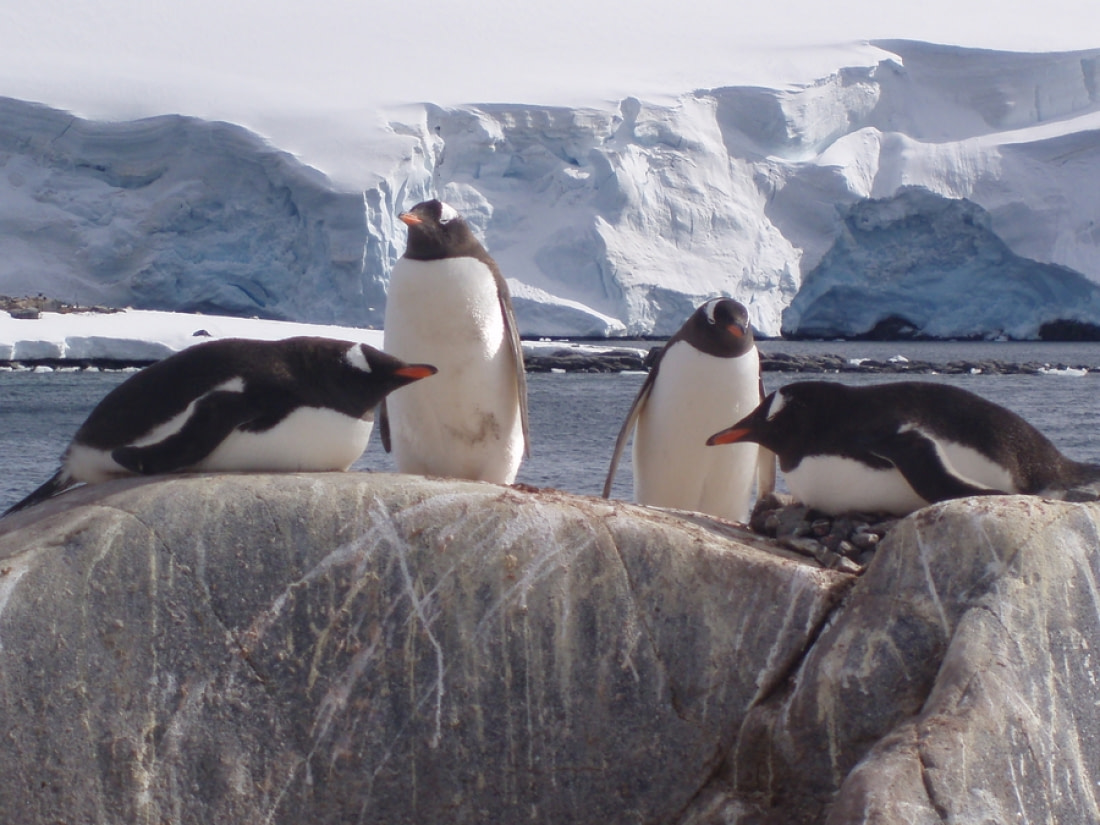
During the Antarctic summer season, Port Lockroy’s penguins are already raising their young, as the first chicks hatch by late December and grow to half their parents’ size within a few months.
Gentoo penguins are typically born in sets of two, with parents taking turns nesting and foraging for food out at sea.
Embark on your own Antarctic cruise, and if it includes a stop at Port Lockroy, you won’t be able to avoid seeing these lively penguins (and many other seabirds) for yourself.
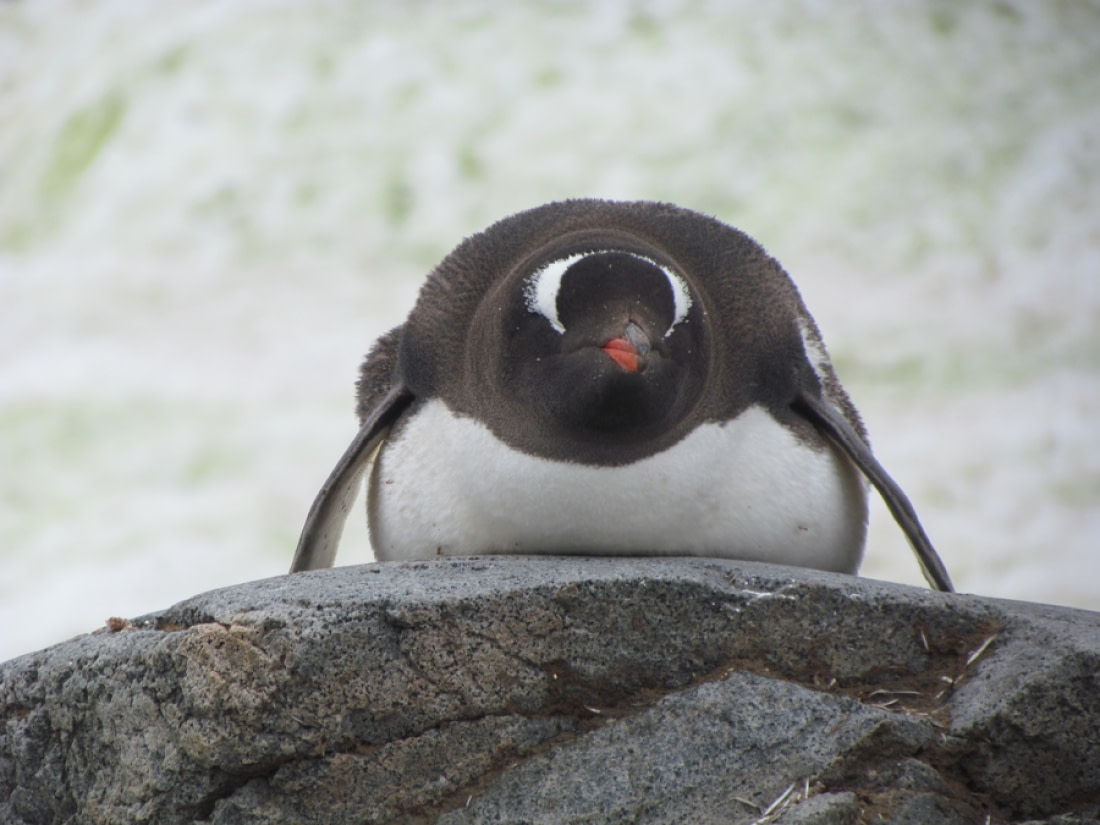
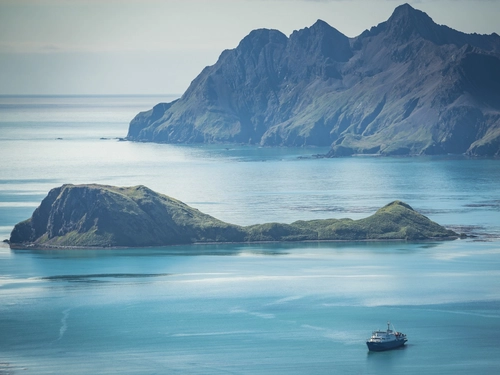

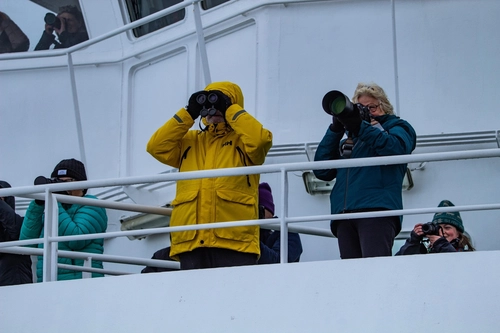


Related Trips
Blog



Cheapest Antarctica Cruises: How to Save on Your Journey

Puffins: Clown Birds of the Atlantic

Secrets of the Snowy Owl: Habitat, Adaptations, and Other Facts

True South: A New Flag for a Global Antarctica

Polar Cruises: The Ultimate Icebreaker
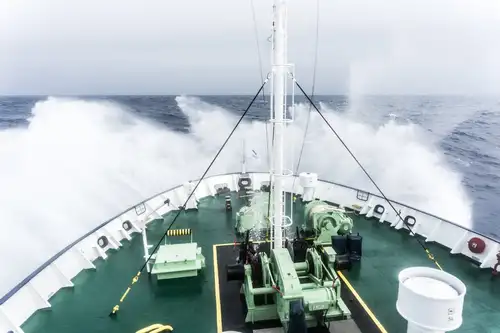
What to Expect When Crossing the Drake Passage

Discover the Scoresby Sund Fjord System in East Greenland
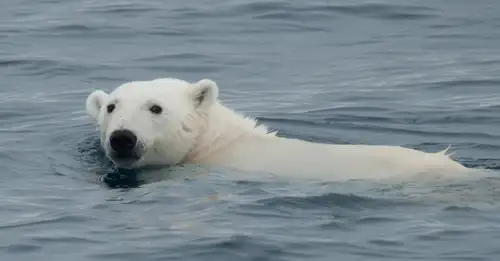
Polar Bear Sets Impressive New Diving Record

The World Is Changing for Greenland's Native Inuit People
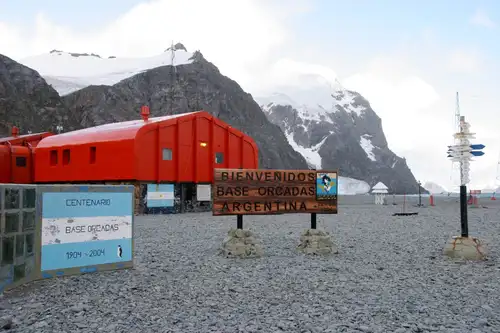
A Look Into the International Research Stations of Antarctica

The Pack Ice and Polar Bears of North Spitsbergen

10 Illuminating Facts about the Northern Lights

Eight Engaging Reindeer Facts

Arctic Seals

10 Tips for Photographing the Northern Lights

A Bug’s Life in Svalbard

The disastrous expedition in the Arctic west

Everything you need to know about Antarctic icebergs
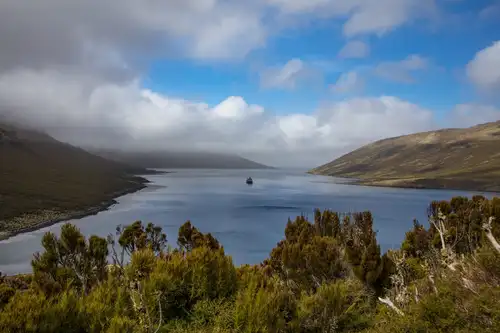
Visiting the Nearly Unknown: New Zealand’s Campbell Island






 19 Days / 18 Nights
19 Days / 18 Nights


